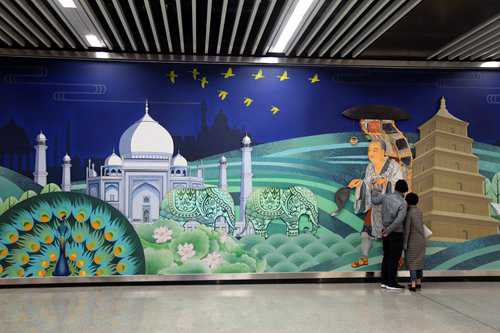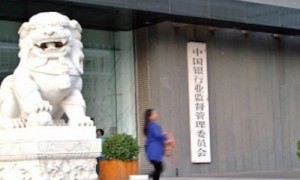导读:西安一地铁站竟然把玄奘和泰姬陵放在一起,是搞错了历史,还是别有深意?

Despite its reputation for touting its millennia of history, the city of Xi’an was schooled recently after a Net user spotted an inaccuracy in a subway station mural of historic proportions.
尽管西安是一座享有千年历史的古城,但是最近在一名网友指出该市地铁站一幅历史壁画中的错误之后,西安还是要学习一个。
The Dayan Pagoda station mural features the likeness of Xuanzang - the famed Buddhist monk who departed from Xi’an around the year 630 to retrieve sutras from India.
大雁塔地铁站这幅壁画中描绘的是玄奘取经的故事,公元630年左右玄奘从西安出发前往印度取西经。
However, social media users were quick to point out the mural’s inclusion of India’s iconic Taj Mahal. Completed in 1643, result was an anachronism of nearly 1,000 years.
但是,社交媒体上的人们很快发现这幅壁画中还包含了印度标志性建筑泰姬陵。泰姬陵完工于1643年,和玄奘的时代相差了近1000年。
"Xuanzang traveled to India, then a Buddhist country in the seventh century while Taj Mahal was built by the Moguls, the Muslim conquerors, a thousand years later," Sina Weibo user "Doctor Shi Leiming" posted Sunday.
上周日新浪微博用户“Doctor Shi Leiming”说道:“玄奘去的是印度,公元7世纪的时候印度还是一个佛国。而泰姬陵是莫卧儿建立的,那是一个1000年后的穆斯林国家。”
An employee at the nearby Dayan Pagoda worried that the mural would mislead visitors.
该地铁站附近大雁塔的一位工作人员担心这幅壁画会误导游客。
Li Lukui, the mural’s designer, explained his team had aimed to create something that "transcended time and space."
据壁画设计师李璐奎(音)表示称,他的团队是想要创作一些“超越了时间和空间”的东西。
Others, however, saw the anachronism as a practical choice. "The Taj Mahal is merely a symbol of India and the painting is just meant to let people know Xuanzang traveled there for Buddhist sutras," said a 21-year-old student surnamed Wang at Shanghai Jiaotong University.
但是其他人则认为这种穿越时空的做法很好。上海交大的王同学说道:“泰姬陵是印度的一个象征,把它画在壁画中只是为了让人们知道玄奘曾经去过印度取经。”







